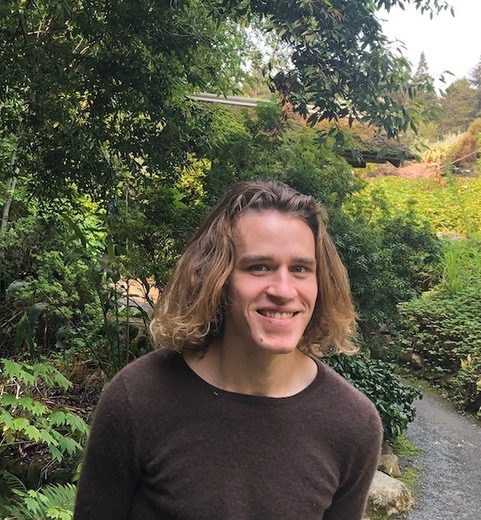Kenneth Loi

mRNA has proven to be a promising novel therapeutic class due to its programmability, low barriers to synthesis, and rapid translation into protein in vivo. mRNA as a platform technology has led to the development of broad applications such as vaccines, therapeutic protein replacement, in vivo genome editing, and in vivo cellular reprogramming. Despite growing interest in mRNAs therapeutic potential, it suffers from low delivery rates due to its instability and short half-life, thereby limiting its clinical adoption. mRNA transcripts are vulnerable to various degradation mechanisms in the cell, as […]
Sophia Ma

Population growth is set to exceed the capacity of modern agricultural yields, but innovations in agricultural technologies have the potential to meet global food needs. One promising area of basic research is involves improving the biology of photosynthesis so the plants themselves can grow more efficiently. At a fundamental level, it is easy to think that more sunlight equates to more photosynthesis. However, plants often receive far more sunlight than they can use, which can be damaging to the cell. Plants and algae have evolved ingenious mechanisms to dissipate […]
Nicole Kim

Many of the antibiotics used today are natural products of bacterial secondary metabolism. Streptomyces spp., in particular, have been found to produce many secondary metabolites, including antifungals, antibiotics, antivirals, and antitumorals. The modern age is facing a problem of rapidly increasing antibiotic resistance coupled with a lack of discovery of new antimicrobial compounds. This project seeks to identify and investigate the spectrum of action of a potentially novel antifungal compound produced by a Streptomyces sasae isolate from burned soil plots in the Blodgett Research Forest. This compound has been […]
Jonathan Mui

Ambient light is essential to a wide variety of biological processes, including behavior, reproduction, and physiology. Accordingly, changes in ambient lighting may induce stress and thereby affect the health of an animal. Analysis of glucocorticoid (GC) hormones, the hormones that help mediate stress responses provides an important means of evaluating such effects. GCs increase blood glucose levels and stimulate glucose production to provide energy for the flight or fight response to stressors. My project seeks to understand how GC levels in colonial tuco-tucos (Ctenomys sociabilis) vary in response to different […]
Diana Francis

At night, the Cassiopea jellyfish slows its activity and enters a sleep state. Because sleep research focuses on models with centralized nervous systems, the sleep behavior of this brainless, decentralized jellyfish exposes a gap in the field that my project will address. In particular, I plan to test our novel RNA interference (RNAi) technique and use it to characterize the molecular mechanisms of sleep in Cassiopea. My lab recently developed the first RNAi protocol for jellyfish, a significant feat given that standard techniques are not easily applied to this nontraditional […]
Victor Canta-Gallo

This project focuses on gaining a deeper understanding of transposable elements (TEs) within monkey flowers. Previously, TEs were thought to be virus-like, parasitic parts of genomes. With the use of supercomputers, we will compare the genomes of many monkey flower genome samples to a reference genome to identify variation that suggests adaptation. Our work will define the role of TEs more clearly, as many are associated with mutations and only arise during specific conditions, which suggests a form of adaptation.
Samuel De Riseis

Sorghum bicolor is a biofuel feedstock and staple food crop. My research focuses on understanding the role of a core circadian clock component, Sorghum bicolor Gigantea (SbGI), in modulating sorghum sensitivity to cryptochrome signaling at different times of the day. In related grasses, cryptochromes, activated by blue light, upregulate active gibberellin degradation genes to strategically cease plant elongation. Importantly, the SbGI mutant has a severe stunted-growth phenotype relative to the wild type, and preliminary protein interaction results suggest that SbGI and cryptochromes interact. These observations inform my hypothesis that SbGI […]
Diana Chernyak

Challenges to the immune system mobilize immune resources to trigger physiological and behavioral changes in a host. Alongside fever and cytokine responses, organisms initiate “sickness behaviors” like lethargy, social withdrawal, and decreased food and water intake to facilitate recovery from illness and prevent disease transmission to conspecifics. Yet, some species mask their sickness behaviors in group contexts to take advantage of survival and reproductive benefits, a form of social modulation. Prairie voles are a unique model for human social behavior, as they form selective, enduring social preferences for opposite-sex mates […]
Nabiha Hasan

One of the difficulties in chemistry research comes from bridging the gap between the data collected by experimental chemists and the computational data analysis done by theoretical chemists. There can be a significant disparity of knowledge between the two branches of chemistry, which can hinder the progress of research and education on both sides. Furthermore, understanding the results of the chemical data can be a daunting task for newcomers to chemistry research. My intention is to bridge this gap by developing a computational framework that gives easily understandable statements on […]
Sydney Abelson
Microbial communities are essential for plant development, growth, productivity, and health. Aerial parts of the plant, referred to as the phyllosphere, consist of multiple habitats for microorganisms to thrive, including beneficial and pathogenic bacteria. The vast and dynamic interactions among bacteria in the phyllosphere microbiome have the potential to significantly affect the fitness of plant populations; therefore, studying these relationships serves as a strong indicator of plant health. This project seeks to identify culturable bacteria within the pear tree phyllosphere and assemble a map of interactions between different members of […]